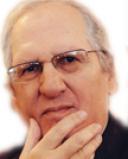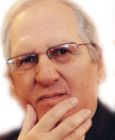Anger
A Wicked Rage for Recognition
The rage behind the Columbine, Virginia Tech, and NIU shootings.
Posted April 22, 2008

Last Saturday, an eighteen-year-old senior at Chesterfield High School in South Carolina was arrested with ten pounds of explosives and a venom-filled journal containing plans to bomb his school and kill himself. Ryan Schallenberger is described as a quiet but " angry young man," who writes admiringly of the two students that carried out the Columbine massacre. Perhaps not coincidentally, yesterday, April 20, was the ninth anniversary of the mass shootings at Columbine High School. In a chilling trend that was unimaginable at that time, there has been a stunning rash of similar incidents since then, most recently at Northern Illinois University on St. Valentine‘s Day, 2008. Steven Kazmierczak, a supposedly happy, stable, twenty-seven- year-old graduate student in social work, randomly blew away five students and wounded eighteen before offing himself. Why?
Whereas teenagers Eric Harris and Dylan Klebold--who killed a dozen fellow students, one teacher, and wounded 24 at Columbine before shooting themselves--were socially isolated, narcissistic, nihilistic, antisocial rebels, Kazmierczak was said to be a model graduate student with a promising future. But despite the early depictions of a well-adjusted, even-keeled, highly functioning, amiable young man, it turns out that Kazmierczak had a hidden dark side.

Unlike the isolated "loner" profile of so many mass murderers, he was involved in a long-term relationship. But Kazmierczak's relationship was, as we now know, not very stable at all, and he is depicted as having been controlling, verbally and physically abusive, and quite angry. At the same time, others portray him as meek, timid and "mousy." So he seems to have publicly projected a kind of milquetoast persona, beneath which a festering rage secretly rumbled. And it appears Kazmierczak had a history of serious emotional problems following high school, being placed in a residential treatment facility for over a year after becoming "unruly" at home. In addition he allegedly engaged in self-mutilation by "cutting," and had been prescribed psychiatric medications which he resisted taking.
In the months preceding the NIU massacre, Kazmierczak obtained a tattoo of a bizarre, bloody image from the horror movie Saw, indicative of his increasingly dangerous inner demons. Twenty-three-year-old Seung-Hui Cho too, had expressed violent and hostile imagery in his creative writing class at Virginia Tech prior to exploding in April, 2007, shooting 32, wounding 25, and then committing suicide. Harris and Klebold wrote graphically in journals of their diabolical plan. Eric Harris had undergone court-ordered anger management a year before Columbine and was also required to take antidepressant medication, both of which were obviously ineffective.
Cho was another extremely passive, introverted, isolated, depressed, and probably psychotic young man with a significant mental health history from childhood. But barely veiled beneath his almost mute, submissive, sometimes bizarre demeanor and ever-present sunglasses boiled a red-hot rage against people and society. He had been briefly hospitalized, ordered by the court to have counseling, and prescribed Prozac, but appears to have followed through on neither. Kazmierczak also took Prozac to what seemed like good effect, until abruptly discontinuing it several weeks before running amok. But which was the real Kazmierczak: the mild-mannered, affable golden boy on Prozac, or the abusive, controlling, cut-throat killer off it? Did medication serve to sustain his deceptive Dr. Jekyll persona and keep his murderous Mr. Hyde hidden? And if so, at what price? What, if anything, can we learn from all this about evil deeds and dangerous states of mind?
What these tragic cases all share in common is the underlying anger and rage, which cannot effectively be treated merely with medication or anger management. What such profoundly troubled individuals need most is intensive psychotherapy that specifically addresses their rage and its origins, and assists them to constructively redirect it. (I discuss such an approach to therapy in my book Anger, Madness, and the Daimonic. ) Well-known forensic psychiatrist Dr. Michael Welner remarks--after reviewing Cho's "manifesto" (see my previous post on the Unabomber) postmortem--that his rabid videos railing vehemently at society "do not help us understand Cho," but rather "distort him." I couldn't disagree more. What both the hateful videos and his homicidal behavior demonstrate --as in the cases of Columbine and Northern Illinois University--is that there are absolute limits to how much anger or resentment a person can repress before aggressively lashing out against the perceived perpetrators of injury, injustice and rejection. Chronic suppression of anger--the daimonic-- is ultimately futile and dangerous.
What we witness in such extreme cases is the once carefully camouflaged face of frustration, fury, indignation and self-assertion, gone mad. Mental illness is not the primary cause, but rather, at least partly, the psychological consequence. We see the desperate struggle and utter failure of these defeated individuals to constructively claim and defend their fundamental right to be themselves, to creatively find and fulfill their destiny, and our own failure as a society-- and as mental health professionals--to help them productively do so. Instead, they settle for facile infamy.


